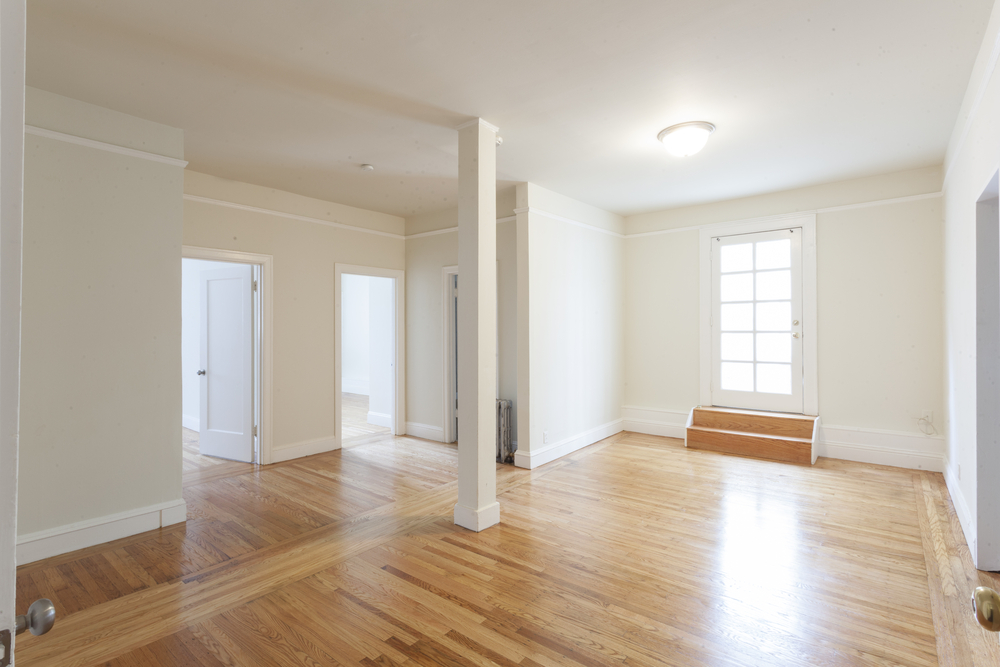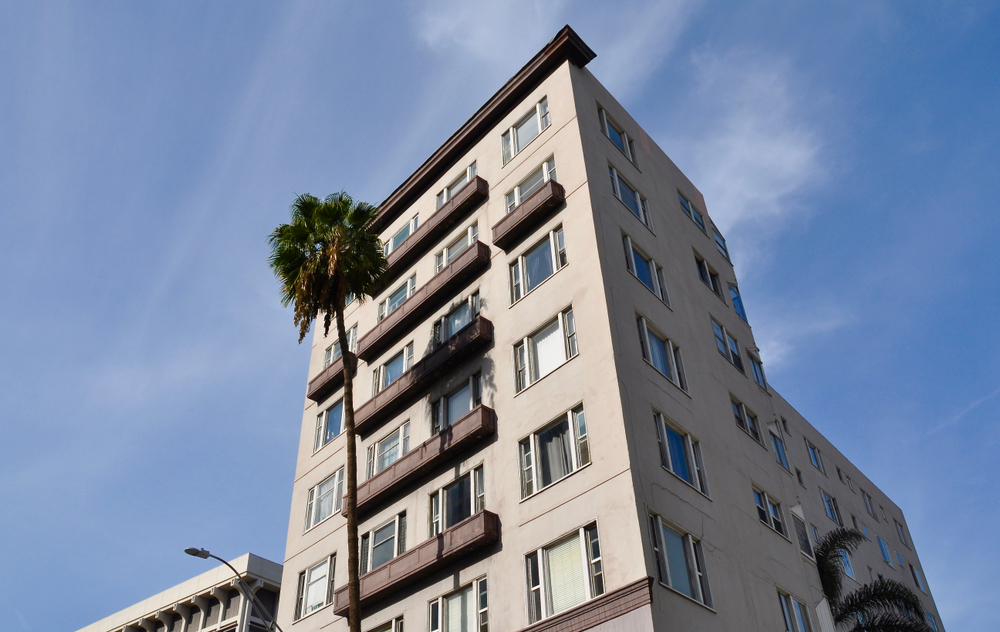Attorney Bijan Shakibkoo from SNS Law Group recently joined a discussion with the Apartment Owners Association to talk about a new limit on rent increases for Los Angeles County, effective July 1, 2024. If you’re a landlord in Los Angeles County, watch the video below, or read the transcript, for a comprehensive understanding of this new law.
Transcript:
Hi everybody, this is Jeff Faller with the Apartment Owners Association and it is great to have you with us today. We’re going to be talking about L.A. County rent increases that are coming up here, different deadlines than some of the other, than the LARSO, or other places, so we’re going to talk about that.
Apartment Owners Association
Before we do, I just want to say that AOA is dedicated to your real estate success and so we’re trying to come up with the content that you need when you need it.
We’re super excited about the Million-Dollar Trade Show and Landlording Conference that we’re going to be holding at the Long Beach Convention Center. That’s going to be August 22nd. Normally, we do it in October, but this one’s in August and we’ll have at least 150 different vendors that are there that all cater to rental property owners, so it’s a must-go.
We’ll also have over 20 different seminars for you to choose from, all in one day. It’s crazy and so I hope we’re able to meet you there for that one. If you’re not a member, that’s okay, you can go anyway. We are asking people to bring canned food and that goes to, I believe, it’s Union Rescue Mission and they’re doing great work helping people get off of the street and equipping them with real-life skills so that they can get a job and become productive members of society.
If you remember that, please do, and that’s going to go to a good cause. That’s really the only thing that we’re asking. We’re not charging a fee and if you’re not a member, we’re actually going to give you a free six-month membership. And look, we don’t even take your credit card information and you get full access so it’s really no strings attached. We just want to give you a taste and we believe that the services we’re providing are going to help you.
And again, our goal is your real estate success. We want to have the group of apartment owners that are the most successful in the whole state.
Here we go, after we do this live stream, or after we do the presentation, we will take questions. If you’re watching on AOAusa.com, then there is a blue little bubble on the bottom right side and you can type your question in there and our speaker will be able to answer that.
We’ll be putting out more content like this so please subscribe and hit the notification bell. Sometimes we put stuff out that is not a live stream and it’s just information that you need, so if you do want to subscribe and hit the notifications so you get it when it’s happening.
Guest Speaker: SNS Law Group
Moving on, the SNS Law Group does a lot of different things but one of the things that I’ve noticed is that they continue to have a stellar reputation on Google reviews, Yelp, everywhere. It’s all five-star reviews and their focus is real estate and business law, so yes, that includes landlord-tenant litigation, among other things. Anyway, that’s just a little information on SNS.
Our speaker today is one of the co-founders and partners at SNS Law Group. He specializes in real estate and business law. He handles landlord-tenant disputes, contract negotiations, mergers and acquisitions, and real estate transactions. With over 10 years of managing assets that are over $100 million, our speaker brings a unique edge to his practice. He holds a bachelor’s degree from CSUN. He also has a Juris Doctorate from the University of West LA. He’s known for his client connections and problem-solving skills.
Our speaker today delivers effective legal solutions, so it’s my pleasure to introduce to you today, Bijan Shakibkoo.
Bijan Shakibkoo, Esq.
Hello everyone. Thank you, Jeff, I appreciate the introduction and it’s always a pleasure working with you and your association. We’ll just dive right into this. Let me go ahead and share my screen.
My name is Bijan Shakibkoo. I am a co-founder and managing partner of SNS Law Group. Our primary practice areas are anywhere within the real estate and business law realm. I do handle a lot of landlord-tenant disputes, the majority of them entail evictions and habitability issues, but today mainly what we’re going to be speaking about is allowable rent increases for properties located in unincorporated L.A. County.
Allowable Rent Increases in Unincorporated L.A. County
I’m aware that a lot of people were excited and thought, “Oh, maybe we can increase our rents more in L.A. City,” but unfortunately that is not the case. This only applies to the increases that are allowable under the unincorporated L.A. County. What I tell my clients a lot of the time is the best way they could figure out if they are in unincorporated L.A. County is just by looking at the cities. If the city is situated, for example, in Gardena, Gardena will be in L.A. County, but Gardena is its own incorporated city, so it won’t fall under its unincorporated L.A. County jurisdiction.
RSTPO
We’re going to be diving deeper into what is the Rent Stabilization and Tenant Protections Ordinance for the unincorporated L.A. County. There are two types: there are fully covered and partially covered units.
Under the unincorporated Los Angeles County—and it’s short for RSTPO, so if you hear that, just know that it falls under the unincorporated Los Angeles County.
And a lot of the times, if—and I tell my clients all the time, if you want to brush up on the law or if you have any questions about how the fully covered and partially covered units really work, and if you don’t call my firm and you want to just speak to someone in the county, you could always call the Department of Business and Consumer Affairs. They have a website and a local number that you could call and ask any questions about increases and whatnot.
The RSTO was enacted in 2020, and the purpose behind it is twofold: it sets a rent cap limit and establishes just cause eviction. I’m sure we’re all aware of what just cause is; you have to have a cause now to evict your tenant. It’s not just a simple, “Hey, here’s a 30-day notice, and we want to terminate the tenancy.”
Fully Covered Rental Properties
The RSTO applies to the following real properties: it breaks down into two prongs, fully covered and partially covered. A fully covered rental unit under the RSTPO primarily focuses on multifamily units, so it’s two units or more on the same parcel and built before February 1, 1995. This will help you determine if your property is under unincorporated L.A. County and if it’s considered under rent control as fully covered or partially covered.
The way you can determine that is you figure out, “Okay, I have two or more units on here, and the building was built before 1995 on February 1st.” Again, the effects of it is the rent caps and the just cause evictions… and I’ll get into what those rent caps are, in the new law that’s passing July 1 of 2024.
Partially Covered Rental Properties
Partially covered units are primarily single-family homes and condominiums, and anything built after 1995. Multifamily buildings built after 1995 fall under partially covered units. There is no rent cap applicable for these partially covered units, but you must keep in mind the Statewide Rent Control Act, which is AB 1482.
Fully Covered Allowable Rent Increases
Under a fully covered property starting July 1, 2024, you can raise your tenant’s rent at a cap of 4.275%. And that’s with a simple 30-day notice to change the terms of the tenancy to increase the rent.
Luxury Units Allowable Rent Increases
The county considers certain units luxury units. If you have a fully covered rental unit in unincorporated L.A. County and it’s a luxury unit, the cap will be at 10%, not 4.275%. To determine if you have a luxury unit, it must have two or fewer bedrooms, be in a building with 25 or more units, and as of September 2018, the rent was at least $4,000.
If a tenant is paying at least $4,000 in a one-bedroom or less in a building with 25 or more units, then the cap is 10%.
This coincides with the Tenant Protection Act. It’s important to determine where your property is situated to understand how you can increase the rents and what power you have regarding evictions.
Partially Covered Allowable Rent Increases
Under a partially covered unit, increases are permitted. For single-family homes or condominiums, there is no cap for a partially covered unit under the RSTPO. However, always keep the TPA, AB-1482, in mind.
But under the Los Angeles County Rent Stabilization Ordinance, if it’s a single-family home, which is a partially covered unit, then it’s unlimited, the increase you can make. Obviously, we want to cap that at once a year. But, the amount that you can increase is, there is no cap. And again, keep that in mind, AB 1482.
And the types of notices required—if it’s more than 10%, you issue a 90-day notice; if it’s less than 10%, then you issue a 30-day notice. That’s pretty much it.
We’ll take any questions and see where it goes.
Question and Answer
Jeff Faller
Okay, here we go. It’s very simple. Very, very simple. We will take your questions now.
Max Allowable Rent Increase for L.A. County Under AB 1482
Q:
I’ll start off with the first question for those people that are L.A. County. If they’re not under the 4.275% maximum allowable increase, do you know what the max allowable is under AB 1482 for this area?
A:
Bijan Shakibkoo
For this area, under AB 1482, if the property is a Tenant Protection Act property, then you are capped at 10% or the local CPI, so it can’t exceed 10%. It’s either local CPI, which I believe this year was at 8 point something. I don’t have it off the top of my head, but it can’t exceed 10%.
Jeff Faller
So, I have 3.9% for the area that it would fall under, plus the five, so that would be 8.9%. The reason we did this video now is because you have to serve these notices 30 days in advance, right?
Bijan Shakibkoo
Correct.
Jeff Faller
We need to do it now.
Bijan Shakibkoo
Right now is the time. Whether you go through my office or have your own notices, by all means, if you want to get those increases going, right now is the time.
Jeff Faller
8.9% or the 4.275%. Tell us what people should be careful with when they’re doing their math here?
Bijan Shakibkoo
Well, I think the main thing they should look at is if they don’t have any legal representation, they should seek one. It’s simple; you can look up laws online, which is helpful. But as long as you’re staying below 10%, if you’re doing your math and seeing that it’s hitting 10% or going over, then I would start to have concerns.
Because, if it’s under the Tenant Protection Act, if it’s exceeding that 10% amount, then at that point you should take a look at, “Maybe I’m doing my calculations incorrectly.”
Jeff Faller
And what if they’re off by… do they round up, or how do they handle this calculation? How do they do that?
Bijan Shakibkoo
Typically, it has to be very, you know, specific, but if it’s rounded, it’s doable. Again, we can’t exceed that 10%.
Jeff Faller
So, no on the 4.275% one. Are they gonna round up or round down on that one?
Bijan Shakibkoo
I would recommend to round down, to play it safe. But, again, we have to see, depending on how much the increase is going to be and how they’re calculating it.
Jeff Faller
Right. I’ll never… AOA will never calculate a rent increase for you because if you’re off by a penny, it messes your whole world up for a long time.
Lancaster: Incorporated or Unincorporated?
Q:
Living in Lancaster, we have both incorporated and unincorporated areas. How do I determine which my property is in?
A:
Bijan Shakibkoo
If you’re situated in those areas where there’s a mix, the best way to figure that out if you’re really not sure is to call the Department of Consumer and Business Affairs. They have a hotline. You can call them, letting them know, “Hey, my property is situated in this area. This is the address. Does this fall under the unincorporated [area], or does this fall in the incorporated area of the city?”
Clarify the Percentage Increase
Q:
Is it 5% plus 4.275% for unincorporated L.A. County, or is it 4.275%?
A:
Bijan Shakibkoo
For unincorporated L.A. County, and this is very specific, are we talking about a fully covered rental unit or partially covered rental unit? Fully covered, it’s 4.275%.
Jeff Faller
With AB 1482, it’s the CPI plus that 5%, so that’s where it’s easy to get confused. If it’s L.A. unincorporated, it’s just 4.275%. And I had cited the 3.9%, that is the plus five, and that is if it’s L.A. County not under RSO. Is that right, Bijan?
Bijan Shakibkoo
That’s correct. To simplify, if you have determined that your property is a fully covered property, you can completely ignore the Tenant Protection Act because you’re only focusing on your local ordinance, which is 4.275%, under a fully covered property.
Then, obviously, when it goes to partial, then that will change.
Jeff Faller
Also, July 1st for L.A. unincorporated, everywhere else it’s August 1st.
Bijan Shakibkoo
Correct.
Jeff Faller
Let’s keep the timeframe… we have different numbers, we have different dates.
What is the Current Cap?
Q:
What is the cap right now before 7/1/2024?
A:
Bijan Shakibkoo
The cap is at 4%, I believe. Yes, it’s 4% right now.
Jeff Faller
At this point, it’s almost irrelevant in the sense that you can’t… you have just a day… Oh yeah, I guess if it was higher then he would want to get a rent increase in before the deadline. But that doesn’t work… no, it’s too late, isn’t it?
Bijan Shakibkoo
Yeah. If it’s anywhere between January 1st of 2024, and June 30 of 2024, that is the 4%. And then after, starting July, it’ll rise to the whopping 4.275%.
Rent Increase Amount for Unincorporated L.A. County
Q:
What is the rent increase amount for the unincorporated area?
A:
Bijan Shakibkoo
So, unincorporated fully covered 4.275%.
Partially Covered vs. Fully Covered
Q:
Please explain the partial coverage versus full coverage again.
A:
Bijan Shakibkoo
Okay, it’s confusing, and I get clients that ask me this all the time. So, what you have to do is first determine whether your property is fully covered. If it’s not fully covered, then it pretty much pushes down to partially covered.
A fully covered rental unit is anything that was built prior to 1995 and has two units or more on the property. If your property doesn’t fall within that section, then you push it down to partially covered.
A partially covered property is pretty much a single-family home or a condominium that was built after 1995.
Rent Deposit Cap on Single-Family Homes
Q:
What is the cap on rent deposits on a single-family home?
A:
Bijan Shakibkoo
On a single-family home, I know they are going to pass a statewide local law, and I believe the cap is one month’s worth of rent. For a security deposit.
Jeff Faller
I’m not sure, let’s check on that one. I kinda think they’re exempt…
Bijan Shakibkoo
Oh, yes, correct. My apologies. If it’s a single-family home, then they’re exempt, so two months’ worth of rent is sufficient.
Jeff Faller
I forgot to mention this on the front end: for those of you that are AOA members, I interviewed three different property management company CEOs and asked them what their rental criteria were. It was pretty eye-opening. Those guys were spread out across the state, and it’s interesting to listen to that. That’s only in your AOA member portal under the videos tab, so definitely take a look at that. I know a lot of people are moving right now, so we’re trying to get you information that’s going to help you.
Unincorporated versus Incorporated
Q:
Please explain unincorporated versus incorporated again.
A:
Bijan Shakibkoo
I’ll give an example here: I’m situated in the city of Los Angeles. If I own a property in the city, we know that the city of Los Angeles sits within the County of Los Angeles. If I have a multifamily property in the city of Los Angeles, the city has its own local rent control ordinance. So, unincorporated County won’t apply to me because the city of Los Angeles is an incorporated city.
Another trick is to look up on Google whether a place like Gardena is an incorporated city. It will let you know, Gardena, it was incorporated on a specific date. So, if it tells you that, then that means it’s an incorporated city, even though it’s within the County of Los Angeles, it is still an incorporated city. So, what would help you to determine, “Okay, I’m in Gardena, does Gardena have a local rent control ordinance?” And at that point, you could research on Google or call my office and we could help you with that.
Jeff Faller
So, incorporation, the city of L.A. is incorporated as a city. The City of Burbank, Pasadena… so there are cities… growing up here, I grew up in Sherman Oaks, I thought Sherman Oaks was its own city. Come to find out, no, that’s part of L.A. That’s just L.A. city. It’s just a part of it.
If you’re incorporated as a city, then you’re separate from the City of L.A. And if you’re incorporated as a city, like Burbank here… they are not L.A. City, they’re not L.A. County. Where do they fall?
Bijan Shakibkoo
They have their own local ordinances. The city of Burbank is incorporated, I believe they have their own housing division. And I think, as far as for landlords to understand, the properties in Burbank, they have a couple of things that are different. They don’t have a local rent control, but what they do is, they follow the Tenant Protection Act. However, there is a little bit, minute, difference as far as if you want to evict a tenant for renovation or owner move-in. They have their own differences compared to the other cities.
But for the most part, they tend to follow suit with the Tenant Protection Act, which is a statewide rent control.
Jeff Faller
Yeah, and plug in there, we have a great community of apartment owners in the City of Burbank. The city council is really looking at instituting rent control, and we could use your participation in the meetings. I believe it’s on the fourth, although don’t quote me on that date, but I know it’s next week for sure. They’re going to be giving a proposal about rent control. Not a proposal about rent control, but it’s related. That’s a good meeting to go to if you’re in Burbank. If you need information about it, just give us a call or email us at membership@aoausa.com, and we’ll get you more information.
Bijan Shakibkoo
I also wanted to add one more thing. I get these questions all the time, I have a lot of clients who own property even in the City of L.A., and they ask me, “How do I know if mr property is rent-controlled?” The easiest way to figure that out is to type in on Google, type in “ZIMAS.” ZIMAS allows you to put your address, and they have a tab that says “Housing.” Under housing, it will let you know whether the property is under the Rent Stabilization Ordinance or not.
And also, if you’re in the City of Los Angeles and you’re not sure if your property is unincorporated or incorporated, go back on ZIMAS, put in the property address. If the property address comes up on ZIMAS, then you’re within the city limits of L.A. If not, then you fall into the unincorporated area.
Jeff Faller
I typed in ZIMAS.com, and it’s not ZIMAS.com, just Google “ZIMAS” because it’s actually zimas.lacity.org. Z as in zebra, ZIMAS. So, that’s that one. Glad you mentioned it.
Long Beach Rent Increase Restrictions
Q:
Does the City of Long Beach have rent increase restrictions?
A:
Bijan Shakibkoo
I believe they do, but again, it really depends on what kind of property you have. Is it multifamily, a single-family home, or a condominium? Once you determine that, you can figure out where you situate, which is important for rent increases and evictions.
It all depends on what kind of property you have and where it’s situated. I believe Long Beach does have some rent caps, but again, it depends on what kind of building it is.
Jeff Faller
Also, remember the trade show in Long Beach. When I say there are 150 different vendors, you guys will be there, right?
Bijan Shakibkoo
Yeah.
Jeff Faller
You’ll be there all day answering questions.
Bijan Shakibkoo
Free legal advice, free.
Closing Remarks
Jeff Faller
So awesome, thank you so much. I know there was a little confusion around it. In two weeks, we’ll have another one on maximum allowable increases for the whole state. The number is not even out yet, but we’ll have a different live stream about that specifically and cover more areas. This was really focused because the date is coming up. Now’s the time to serve the rent increase notice, so we wanted to hit this one specifically.
Bijan, thank you so much for sharing with us. You guys see his number and everything, give him a call. They answer the phone and have great reviews. Search them up, don’t take my word for it, give them a call and see what happens. Thank you so much.
Bijan Shakibkoo
Thank you, Jeff. It’s always a pleasure.
 424-220-2052
424-220-2052





 Click To Call Now
Click To Call Now









